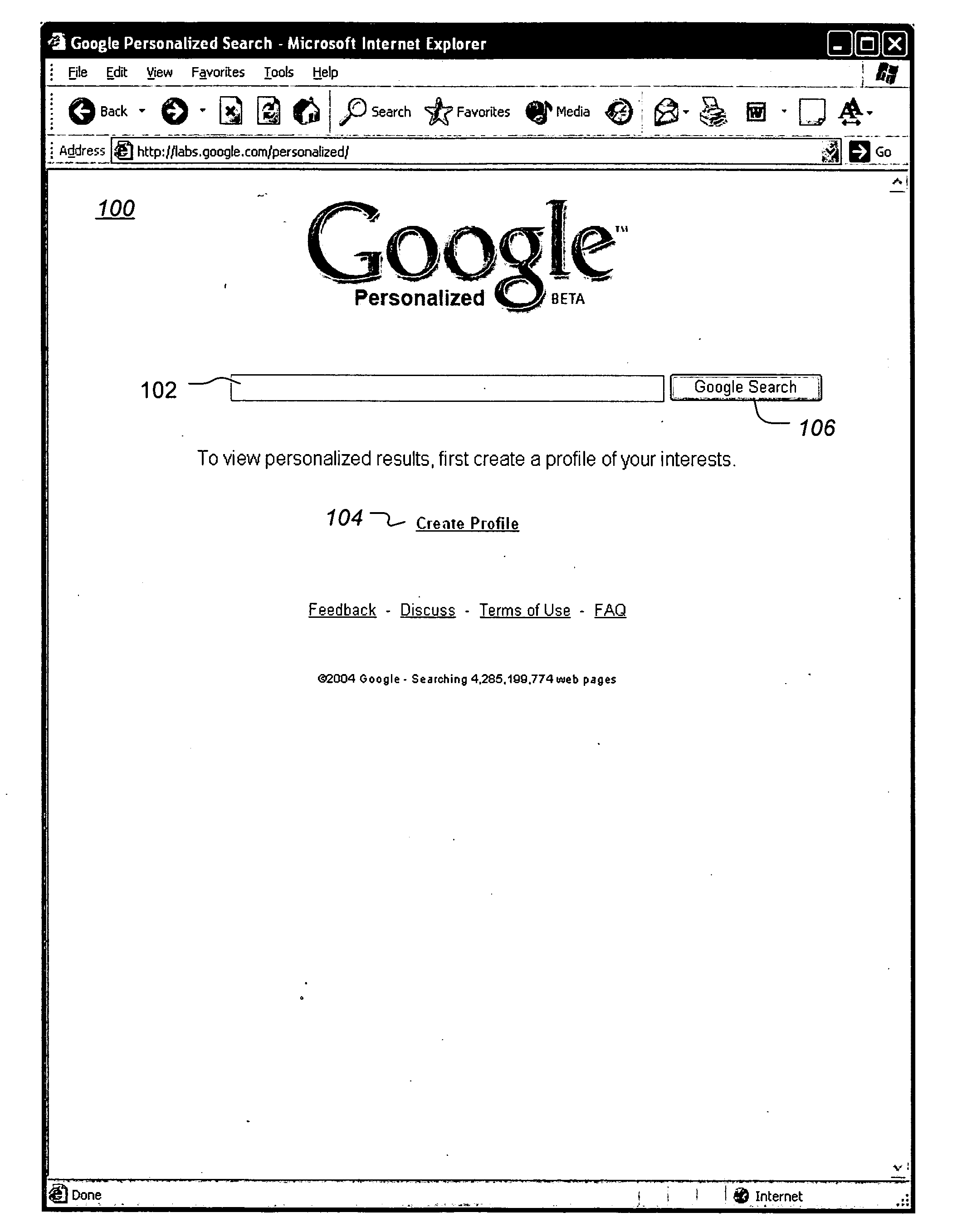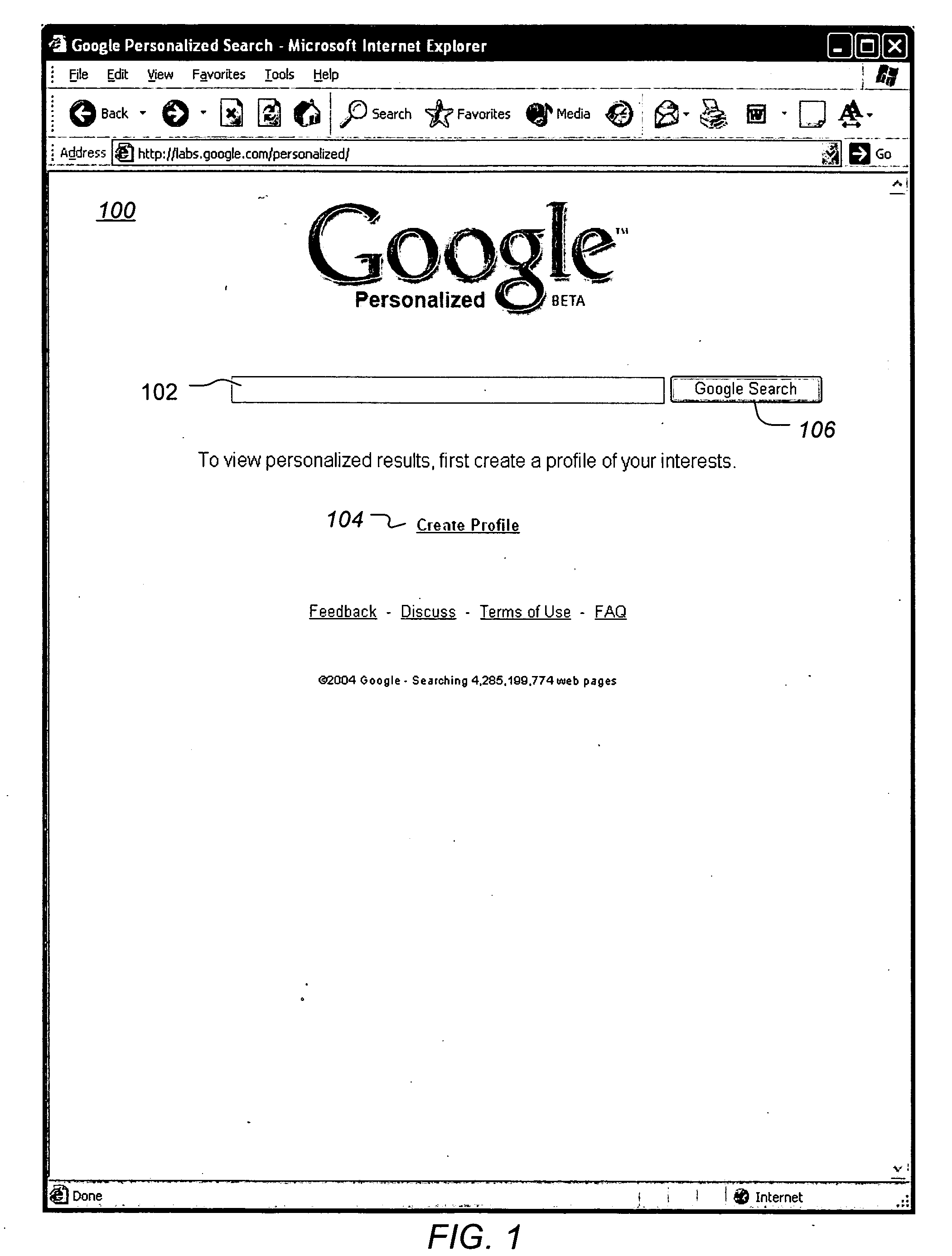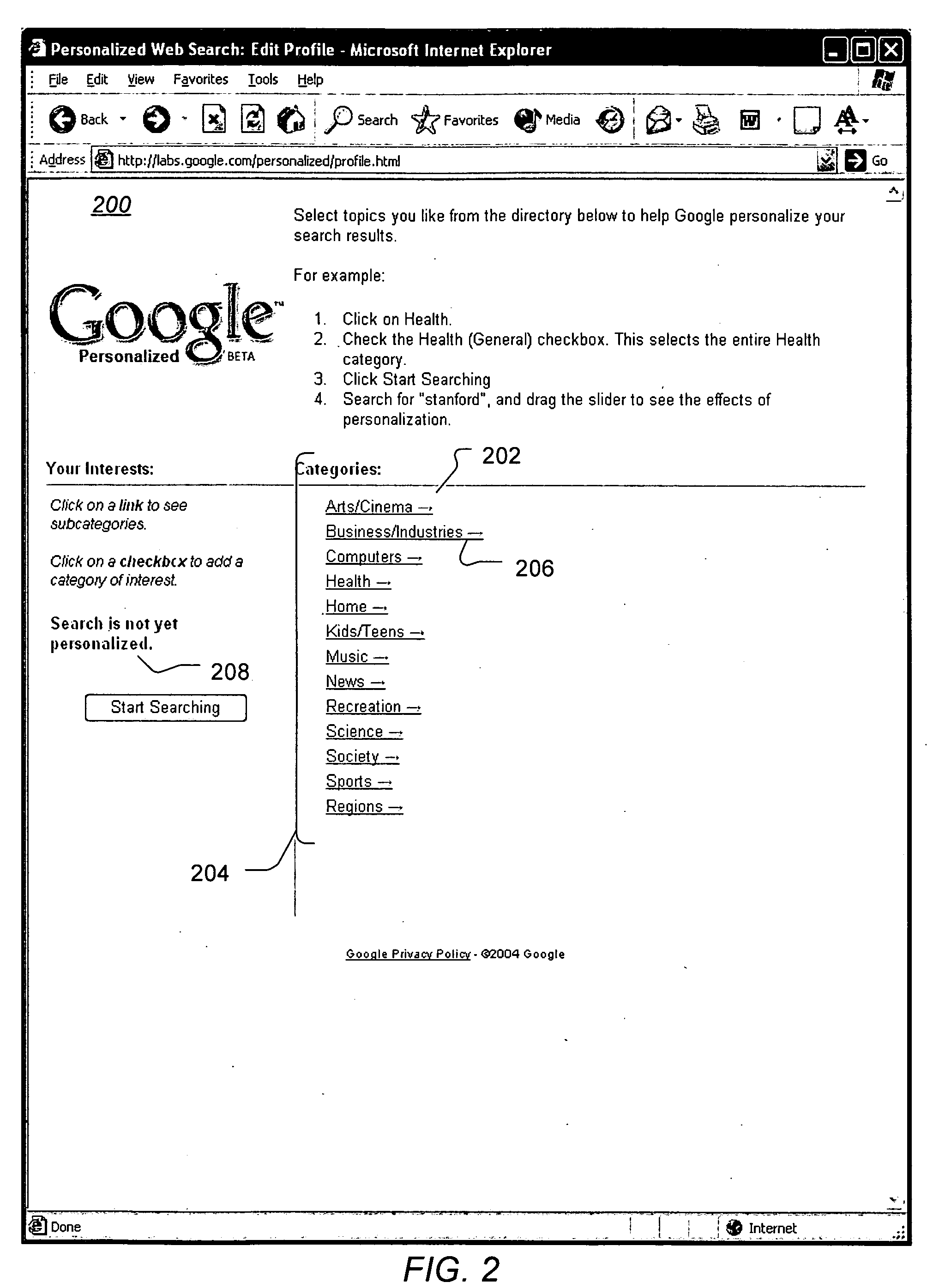Variable personalization of search results in a search engine
a search engine and variable technology, applied in the field of personalization of search results, can solve the problems of not reflecting in any way the user's underlying interests, and users may not want to always have such interests influence the query
- Summary
- Abstract
- Description
- Claims
- Application Information
AI Technical Summary
Benefits of technology
Problems solved by technology
Method used
Image
Examples
Embodiment Construction
[0020] Referring now to FIG. 1 there is shown the entry (or landing page) 100 of a search engine. The search engine includes a query entry field 102 in which a user enters the terms of a search query. A search button 106 submits the query to the search engine for processing. The first time the user accesses the search engine, he will not have defined a user profile for personalizing the search results, and a message is displayed to that effect. The user can access the Edit Profile link 104 in order to establish their personal interests.
[0021] Clicking on the Edit Profile link 104 accesses the page 200 illustrated in FIG. 2. This page shows the top level topics 204 of a topical directory 202. The topics in the directory can be, for example, the topics defined in the Open Directory Project, found at http: / / dmoz.org / or can be some other topical directory. (In this disclosure the term “topic” and “category” are interchangeable, as are “subtopic” and “subcategory”.) The top level topic...
PUM
 Login to View More
Login to View More Abstract
Description
Claims
Application Information
 Login to View More
Login to View More - R&D
- Intellectual Property
- Life Sciences
- Materials
- Tech Scout
- Unparalleled Data Quality
- Higher Quality Content
- 60% Fewer Hallucinations
Browse by: Latest US Patents, China's latest patents, Technical Efficacy Thesaurus, Application Domain, Technology Topic, Popular Technical Reports.
© 2025 PatSnap. All rights reserved.Legal|Privacy policy|Modern Slavery Act Transparency Statement|Sitemap|About US| Contact US: help@patsnap.com



